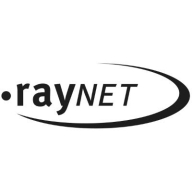

Microsoft Intune and RayManageSoft Unified Endpoint Manager compete in the endpoint management category. Microsoft Intune appears to have the upper hand due to its cost-effective pricing and strong security features, while RayManageSoft is recognized for its advanced features.
Features: Microsoft Intune focuses on cloud integration, security management, and streamlined policy enforcement. RayManageSoft Unified Endpoint Manager provides extensive application deployment options, advanced functionalities, and granular control capabilities.
Ease of Deployment and Customer Service: Microsoft Intune offers a straightforward deployment through its cloud-based model and responsive customer service enabling quick integration. RayManageSoft Unified Endpoint Manager, despite requiring more setup time, offers extensive support and comprehensive deployment options.
Pricing and ROI: Microsoft Intune provides competitive pricing and potential for high ROI through scalable cloud services. RayManageSoft Unified Endpoint Manager may involve higher upfront costs but delivers significant ROI justified by its advanced capabilities. Microsoft Intune is ideal for budget-conscious buyers, while RayManageSoft serves as an investment for those seeking advanced features.

Microsoft Intune provides centralized management of mobile devices and applications, ensuring security, compliance, and productivity through integration with Microsoft services like Microsoft 365 and Azure Active Directory.
Organizations use Intune for managing mobile devices and applications, enhancing security and compliance across platforms. With features like single sign-on, conditional access, and zero-touch deployment via Autopilot, it facilitates efficient operations. Intune's scalability, easy enrollment, and capabilities such as remote wipe support diverse device management, offering robust data protection and efficient operation. Despite its features, improvement areas include reporting, compatibility with non-Microsoft devices, and better support for macOS and Linux devices.
What are the key features of Microsoft Intune?
What benefits should users look for in reviews?
In industries such as finance, healthcare, and education, Microsoft Intune is implemented to ensure secure and compliant device management. Companies leverage its capabilities to deploy security policies and manage both corporate-owned and BYOD environments, facilitating a unified approach to data protection and compliance.
RayManageSoft Unified Endpoint Manager enables comprehensive management of IT assets across diverse environments. This tool supports centralized control, simplifying endpoint administration and deployment.
RayManageSoft Unified Endpoint Manager offers robust solutions for IT administrators seeking streamlined management of digital assets. Its functionality extends to handle software distribution, patch management, and compliance checks, making it a dependable choice for enhancing operational efficiency. Despite its strengths, some users note areas for improvement like the need for a more intuitive navigation menu.
What are RayManageSoft Unified Endpoint Manager's key features?Industries implementing RayManageSoft Unified Endpoint Manager often experience enhanced IT performance and a streamlined approach to endpoint management. In sectors like healthcare and finance, where security and compliance are paramount, this tool facilitates effective management of IT operations, ensuring critical systems function smoothly while adhering to industry regulations.
We monitor all Unified Endpoint Management (UEM) reviews to prevent fraudulent reviews and keep review quality high. We do not post reviews by company employees or direct competitors. We validate each review for authenticity via cross-reference with LinkedIn, and personal follow-up with the reviewer when necessary.